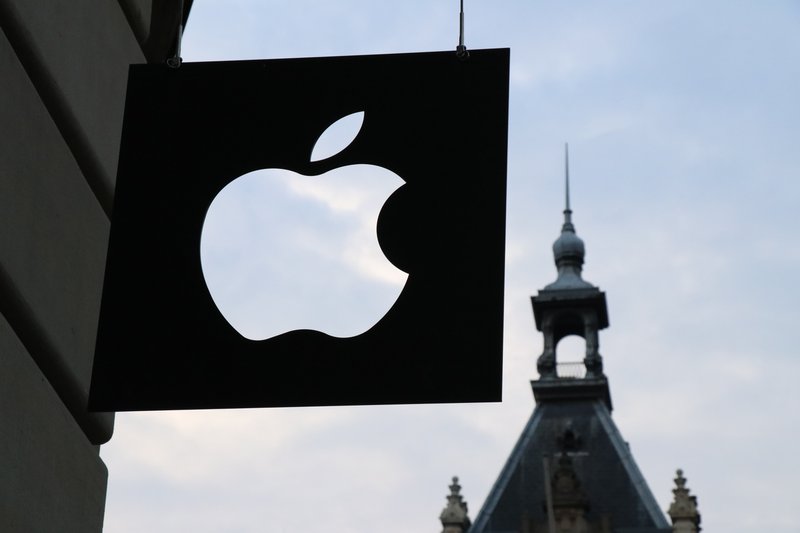As an owner of a small software company, who is on the bottom rung of the ladder, you might think branding is something that is best left to the great players of the industry, like Google, or Apple. You don’t necessarily have to have an Amazon-sized bank account to come up with creative ideas and strategies that enhance your brand. There are plenty of things that a small business can do with regards to brand enhancement to develop a strong brand identity despite a limited budget.
Here are 7 brand enhancement strategies to get you started:
#1: Define Your Brand

Know Thyself
Your brand is much more than your logo. It is the perception of your software company in the eyes of the world. It is who you are as a company, what your values are and the message you’re broadcasting to the world via your products. It is about how you make your users feel along with the unique experience you’re presenting to them. The very core principle of branding is knowing thyself, rightly understanding your values, vision and what you can bring to the table (your value proposition). The more you clarify those aspects of your software brand, the more profoundly you get to align your brand strategy. Posing to yourself the following questions may help you better identify your brand-identity:
- Why did you start this business?
- What are the core missions and values of your company?
- What sort of an impact you’d like to create through your software products?
- What differentiates you from your competition?
Know your Personas
Your brand must connect with the customers that you’d like to work with the most. Often occupied with coding and building the actual product, smaller software companies neglect figuring out who their ideal customers (their personas) are, so their brand-enhancement strategies suffer in return. Knowing what your users need and how to fulfill those needs will help you better clarify your personal value proposition, which is essential to create an authentic and enduring brand. Knowing your user persona further helps while expanding your software brand rolling out new products targeting the same audience. That is why not only knowing thyself but also your ideal users is a crucial element of compelling branding strategies.
#2: Design Your Brand

You’ve defined what your missions and values are, and you know now who you target as customers, then it is time to start building your brand. When it comes to developing a compelling brand, consistency is a sine qua non. Best brands are memorable because of the consistency they maintain with repetition of the same logo, colors, fonts, and visuals.
Designing a consistent brand starts with creating a brand style guide. It is a rule book that helps designers of your brand be on the same page with your brand’s direction while presenting to the world. A brand style guide is the primary visual source of your branding strategy, which may reference the tone, grammar, and word usage, etc., as well. Check out this Hubspot post for more details.
A compelling brand is easily recognizable. And people mostly associate brands with the logo, which is like the face of your company. It’s the most recognizable visual asset that conveys your company’s values. You should begin your branding strategies with the logo, since it will act as the reference point to all other visuals of your brand, such as your website. Here’s a post of Crowdspring on key elements that are essential to every good logo.
Your website is the first thing that most of your customers in search of your product or service encounter. That is why, when a visitor land on your website, it must look consistent with the rest of your branding. Check up on our latest post, If you’d like to learn more about developing your e-commerce website in line with user-friendly design principles.
#3: Be Unique

Your brand identity must be special to truly stand out in a crowd of competitors. That is why you must establish your P.O.D., your point of difference. No matter what niche you’re targeting, chances are, other companies are developing similar software products or services to yours. Your P.O.D. is what makes your brand unique and the reason why a user would choose your products over competitors'. For instance, your software product has a better UX design, runs more efficiently, or offers more features than others in the same price range, you might call those factors your P.O.D.
The more distinctive your point of difference, the more likely you are to find and develop your “blue oceans” (untapped, emerging markets), and avoid “red oceans” (cut-throat, oversaturated markets). The Blue Ocean Strategy, based on the eponymously titled book, which is a marketing strategy that makes the competition irrelevant by redrawing industry boundaries, innovating better ways to serve the needs of your customers. As PayPal founder, Peter Thiel said, “competition is for losers.”, and that is right. Figure out what your brand's P.O.D is, identify what your users value, and differentiate yourself by reinventing better ways to provide those values.
#4: Build Your Community

For your brand to have a lasting impact, you need to connect with your customers. Your branding strategy should not only focus on "attracting customers", but should further revolve around "customer engagement" that lead to “customer delight” by which your customers become the actual promoters of your brand. Here’s a Hubspot post on Flywheel model of Attracting, Engaging and Delighting customers. In other words, leverage word of mouth marketing by fostering a sense of a social community that connects your customers with your brand.
Social Communities
Small businesses have many opportunities to build online communities. According to a study done by Lithium, 81% of consumers are influenced by their friends’ social media posts. By building a social community, you get to become the media that allows you to speak directly to your customers. When you become the resource, you own the brand. Having regard to where your customers hang out online, choose on which social platform you need to focus and utilize the most, and start engaging with your customers. Remember that the better the content you present, the higher the customer attraction, engagement, and delight you will bring about. Here’s a post of David Meltzer on building social media communities.
Referrals
Another way to leverage your relations with your customer is to create referral programs. Your users can’t help but spreading the word of your brand when they are truly satisfied with it. Referral programs nudge your customers just a little to do so. When applied smartly, they get to create excellent results, as is seen from the Dropbox example. Dropbox offers 500 MB of extra storage space to existing users for every friend they refer by up to 16 GB. Back then when Dropbox was just a smaller software company, it saved them countless amounts of advertisement money since their users had already done the job for them. Check out this OptinMonster post for other inspiring growth hacking examples for software brands.
#5: Establish Yourself As Thought Leader

Another way to consolidate a sense of community is gathering your customer-base around the knowledge you share with them. In other words, establishing yourself as a thought leader through valuable content you are to offer is the foundation of the Flywheel model of inbound marketing above mentioned. Branding is not a trick, it is who you are. And once you establish yourself as an industry thought leader by sharing your wisdom through different forms of content, you will become a go-to resource for your prospective customers, which helps you develop a strong brand-voice that slowly, but surely, strengthens your brand. Content marketing is like a secret weapon for small businesses. Let’s go through a number of the most popular types of content marketing;
Blog Marketing
Blogs are great for content strategy that drives your website a steady amount of organic traffic. Statistically speaking, companies that blog receive have 97% more links to their websites; and websites with a blog tend to have 434% more indexed pages. As a large group of marketers believes blogs are the most important type of content marketing, blogs should be an integral part of your brand strategy. If you are running a blog and want to know how to promote it via email-marketing, check out our previous post.
Podcast Marketing
Starting your own podcast will give you the edge over your competition, helps you build your brand while developing great relationships with industry experts whom you interview with. Although that isn’t always easy, even for mid-sized companies, one must walk the extra-mile where each year marketing gets more expensive and more competitive with the web getting saturated.
Video Marketing
All brands need a video marketing strategy. If you don’t have one, you're likely falling behind. Video marketing helps you market and promote your software brand, educate your users and customers, increase engagement within your social community, and reach your prospects via a more effective means of communication.
#6: Look for Partnership Opportunities

There are no shortcuts to success. But still, many hands make light work. Partnerships have vital importance in the early days of your brand lacking the needful recognition and trust of customers. Through means of affiliate marketing, teaming up with a company that is non-competitive, but targeting the same audience, provides you with an opening to a wider audience of prospective customers and promote your brand.
Partnering, especially, with bigger industry players might get you the momentum you need to step up your branding strategy. Say, you’ve just launched your software product. And the bigger brand that you are partnering with used your logo during a demo, an expo or a high-profile event, which shows people that you have valuable connections in the industry. You would instantly have the recognition and credibility that you can leverage to build and develop your brand.
Such partnerships, however, not necessarily need to happen at an inter-company level, which might be particularly hard for incipient software start-ups to get into. And, maybe, you haven’t even embarked upon the path of becoming a thought leader in your industry. But the good news is, there is a ton on the social media that became so. You can surely take advantage of someone else’s established "influence" over the market through influencer marketing. That might be someone, for example, who reviews software products on his social channels that has a wider audience that fits in with your persona. Find the influential people active in your area of business and team up with them.
#7: Run Ads

Needless to say, running online ads will increase the visibility of your software brand. Pay Per Click (PPC) is surely an option. However, for budgeting reasons, small software companies need to get the most out of what they pay for. As Google Ads is the go-to option for PPC marketing, LinkedIn remains to be the champion of smaller companies for the reason that it is cost-effective and offers a way more detailed segmentation for your targeted audience. Say, you want to reach out to a specific 24 to 29 years-old, software engineer who is involved in gamification projects and lives in the Bay Area in Northern California, then LinkedIn is the place-to-be.
That is essential here that you own your niche to get the most effective results for the lowest Cost Per Click possible. Whatever that might be, zero in on one hyper-specific area of focus and make it yours. And that returns us to the beginning, know thyself, meticulously define your personas, find out your niche, even better create your own, and act upon them. When you keep your eyes on the ever-changing needs of your customers at all times and optimize your brand enhancement strategies in accordance with them, your brand will be alive and well. Along with your beloved company.